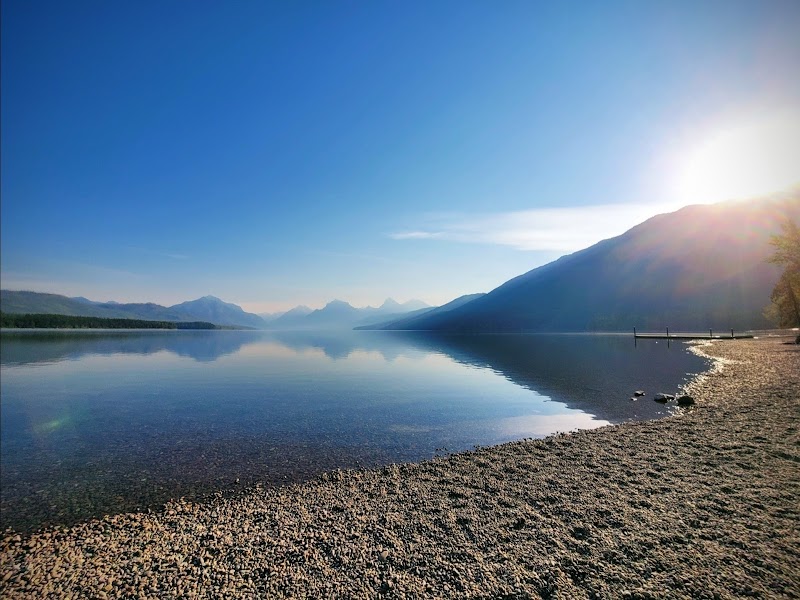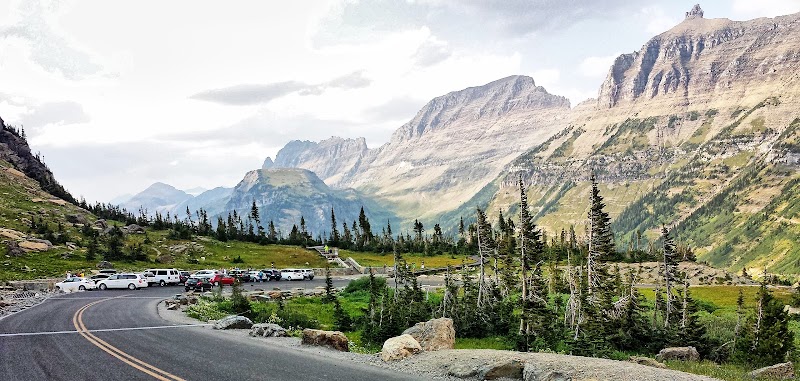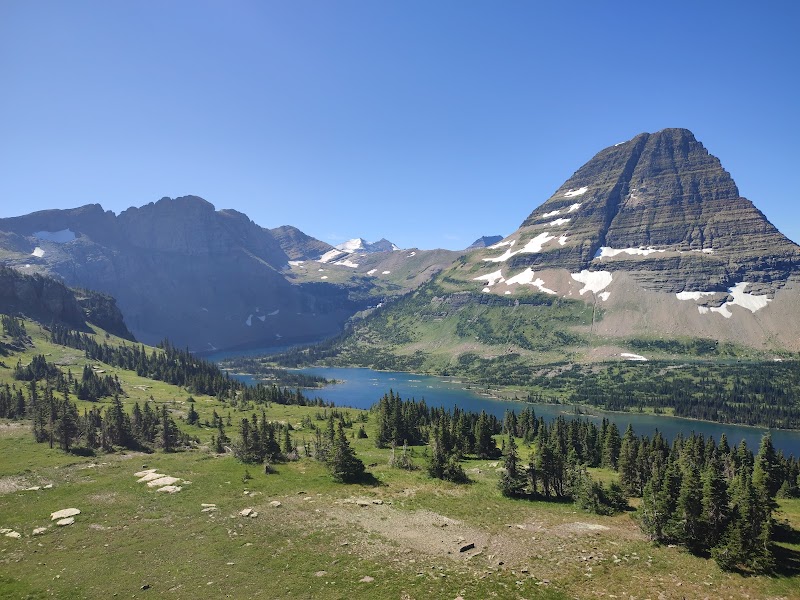Welcome to Glacier National Park
Have you ever dreamed of exploring the awe-inspiring landscapes of Glacier National Park that sprawls across a million acres and is adorned by over 700 miles of hiking trails? As you wander through the majestic peaks, sparkling waterfalls, and tranquil alpine meadows, you will come across iconic sites such as the Going-to-the-Sun Road and the vividly colored St. Mary Lake. Every nook and cranny of the park echoes the ancient stories of the glaciers that shaped it, beckoning visitors to step into a realm of unspoiled beauty and adventure.
As you set off on this exciting journey of exploration, a comprehensive tourist map will be your trustworthy companion. A well-detailed map of Glacier National Park will guide you through the park's diverse landscapes, helping you discover hidden gems off the beaten path. It empowers you to curate your unique journey, ensuring a memorable trip of a lifetime.
Booking.comUnleashing the Magic of Glacier National Park
Immerse yourself in the heart of Montana's wilderness, as you unearth the breath-taking allure of Glacier National Park. With a plethora of captivating attractions, each possessing its unique charm, the park promises a transcendental voyage through nature's magnificence. If you love exploring the wild, you might also enjoy the Rocky Mountain National Park.
Top Sightseeing Spots in Glacier National Park
- Grinnell Glacier
- Iceberg Lake
- Highline Trail
- Logan Pass
- Lake McDonald
- Many Glacier
- Two Medicine Lake
Reveling in the Icy Majesty of Grinnell Glacier
Grinnell Glacier, an enchanting relic of the Ice Age captivates with its mesmeric beauty. This ancient glacier, named after George Bird Grinnell, is a testament to the power of nature and a poignant reminder of the changing climate. It's melting over the years has created the stunning Grinnell Lake, known for its turquoise waters. If you refer to the tourist map of United States, you'll notice the closeness of Grinnell Glacier to Many Glacier, a hotspot for wildlife viewing. For more wilderness experiences, you might want to add the Mount Rainier National Park to your travel list.
Unveiling the Mysteries of Iceberg Lake
In the midst of rugged terrains, the surreal Iceberg Lake strikes an impressive image. Named after the giant icebergs that float in its icy waters even during the peak of summer, this lake opens up a world that seems out of this world. Its mesmerizing beauty is amplified by the towering Iceberg Peak that serves as a dramatic backdrop. Just south of Iceberg Lake, you'll find the adrenaline-pumping Highline Trail.
Trekking the Famed Highline Trail
Adventure enthusiasts will be enticed by the thrilling Highline Trail. This stimulating trail traces the Continental Divide and offers awe-inspiring panoramas of the park's rugged landscapes. This is not a trail for the faint-hearted. With steep cliffs and narrow paths, it brings a thrill akin to walking on the edge of the world. The trail's endpoint, Logan Pass, is a popular sightseeing destination.
Experiencing the Unspoiled Beauty of Logan Pass
At the summit of Going-to-the-Sun Road, you'll find Logan Pass. Renowned as the crown of Glacier National Park, Logan Pass offers sweeping vistas of alpine meadows, rugged peaks, and sparkling glaciers. The pass is also a gateway to the Hidden Lake Trail, where hikers can enjoy the serene beauty of one of the park's most enchanting lakes. A short drive from Logan Pass will take you to the relaxed shores of Lake McDonald.
Unwinding at the Tranquil Lake McDonald
After a long day of exploration, find solace by the calm waters of Lake McDonald. The largest lake in Glacier National Park, Lake McDonald is the perfect place to unwind as you soak in the enchanting views of the surrounding peaks. Its crystal-clear waters mirror the changing colors of the sky, creating a mesmerizing spectacle. Not far from here, you'll find Two Medicine Lake, another serene spot nestled amidst the park's natural wonders.
Exploring the Many Glaciers Area
Dive into the wild heart of Glacier National Park at Many Glacier. This area, aptly named, is home to several glaciers and offers an exceptional opportunity for wildlife spotting. From grizzlies to mountain goats, the area brims with diverse fauna. A visit to Many Glacier wouldn't be complete without a boat ride on the Swiftcurrent Lake, a perfect way to appreciate the area's scenic beauty.
Discovering the Hidden Charm of Two Medicine Lake
Finally, let your journey through Glacier National Park lead you to the hidden charm of Two Medicine Lake. Named for the two medicine lodges erected by the native Blackfeet, this serene lake offers a peaceful retreat from the more crowded areas of the park. Here, you can enjoy a tranquil boat ride, venture on a hiking trail, or simply admire the stunning reflections on the lake's surface.
Glacier National Park: An Unforgettable Journey
From the icy grandeur of Grinnell Glacier to the tranquil beauty of Two Medicine Lake, Glacier National Park offers an unforgettable journey through nature's grandeur. Whether you are an adventure enthusiast, a nature lover, or a history aficionado, this park has something to captivate your spirit and ignite your sense of wonder.

Practical Information for Visiting Glacier National Park
Transportation and Mobility
Navigating through Glacier National Park requires some strategizing. Although private vehicles are permitted, remember that parking spaces can become limited during the peak season. The park offers free shuttle services during the summer months, with stops at famed destinations like Apgar and St. Mary Visitor Centers, Logan Pass, and more. If you're staying outside the park, consider using the various commercial transportation services available from neighboring towns.
Schedules and Prices
The park welcomes visitors all year round, but some areas and facilities only operate seasonally. The popular Going-to-the-Sun Road, for instance, is typically open from late June through October, depending on weather conditions. Visitor centers are usually open from late May to late September. As for the entry fee, expect to pay around $35 per vehicle for a 7-day pass. An annual pass is available for $70, which is a great deal if you're planning multiple visits within the year.
Safety Tips
While exploring the park, remember to stay on designated trails and respect wildlife from a safe distance. Always carry bear spray and know how to use it. Altitude sickness can be a concern, so hydrate frequently and take time to acclimate. In winter, be prepared for extreme cold, heavy snow, and potential avalanches. Check the park's website for up-to-date safety information before your visit.
Practical Recommendations
The best time to visit Glacier National Park largely depends on what you want to experience. For hiking and road trips, summer is ideal, while winter offers excellent opportunities for snowshoeing and cross-country skiing. Spring and fall can be less crowded, but some amenities may be closed. Accommodations inside the park, including campgrounds and lodges, fill up quickly during peak times, so it's advisable to book well in advance.

Frequently Asked Questions about Glacier National Park
Q1: What unique flora and fauna can I expect to see in Glacier National Park?
Glacier National Park houses a myriad of unique flora and fauna, including over 1,000 species of flowering plants and over 60 types of mammals. Birdwatchers will enjoy spotting bald eagles, harlequin ducks, and peregrine falcons.
Q2: Can I bring my pet to Glacier National Park?
Pets are allowed in Glacier National Park, however, strict guidelines are in place to ensure the safety of your pet and the conservation of the park's delicate ecosystem. Pets must be kept on a leash no longer than six feet at all times. They are only permitted in developed areas like campgrounds, picnic areas, and along roads. Pets are not allowed on park trails, in the backcountry and lakes.
Q3: What are some less crowded but equally beautiful parts of Glacier National Park?
The North Fork area of the park offers less crowded alternatives to the park's more popular sites. The Bowman Lake area is particularly beautiful and less frequented by visitors. Another hidden gem is the Quartz Lake Loop trail, a moderately challenging hike that rewards you with stunning lake views.
Q4: Are there accessible features and facilities for visitors with disabilities?
Glacier National Park is committed to making the park accessible to everyone. Many of the park's facilities, including restrooms, picnic areas, and campgrounds, are wheelchair accessible. In addition, the park offers several accessible trails and scenic overlooks. For more detailed information, visit the park's official accessibility page.
Q5: What is the best time to visit for wildflower viewing?
Wildflower season in Glacier National Park typically starts in late June and extends through early August. However, the exact timing can vary depending on the year's weather conditions. The alpine meadows along the Going-to-the-Sun Road and the Many Glacier area are particularly popular for their wildflower displays.
Q6: Is there any cultural or historical significance to the park?
Glacier National Park holds deep cultural significance for the Native American tribes that have inhabited this area for thousands of years. The park was traditionally used by the Blackfeet, Salish, and Kootenai tribes for hunting, gathering, and spiritual ceremonies. You can learn more about the park's cultural history at the park's visitor centers or by attending ranger-led programs.

